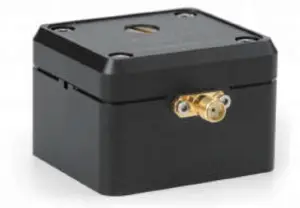At telecommunication wavelengths, materials with narrower bandgaps than silicon are essential for light detection. Germanium is the preferred choice due to its strong absorption in this range and its ability to be epitaxially grown on silicon, ensuring seamless integration with standard silicon processes—ideal for long-reach telecommunication systems.
For short-reach links, where both ends are controlled, bonded III–V semiconductors are often integrated near silicon waveguides. Using evanescent or butt coupling, these structures enable efficient light transfer to the photodetector. Smaller detector cross-sections further reduce capacitance, boosting speed and efficiency.
State-of-the-art germanium photodetectors have achieved bandwidths up to 120 GHz with 0.8 A/W responsivity, while others report 1.05 A/W at 20 GHz and 84% quantum efficiency. Devices with 2.4 fF capacitance have demonstrated 40 GHz operation and 90% efficiency. IBM’s low-bias avalanche detectors deliver 10 dB gain and >30 GHz speed with enhanced noise performance.
As silicon photonics evolves, high-speed, low-loss photodetectors remain indispensable for advanced telecommunication and data-center applications, ensuring efficient optical-electrical conversion across integrated systems.
Terms: dB gain refers to the increase or amplification of a signal’s power, expressed in decibels (dB). It measures how much stronger a signal becomes after passing through an amplifier or other device that increases signal strength. The decibel is a logarithmic unit, so even small changes in dB can represent significant changes in signal power.
Key Points
When a device has a 10 dB gain, the output signal is 10 times stronger than the input signal in terms of power.
Gain refers to the increase in the strength or amplitude of a signal.
The decibel (dB) is a logarithmic unit used to express ratios, such as the ratio of input to output signal strength.





